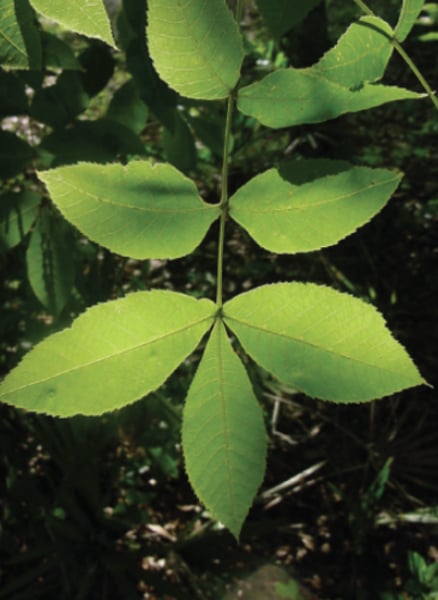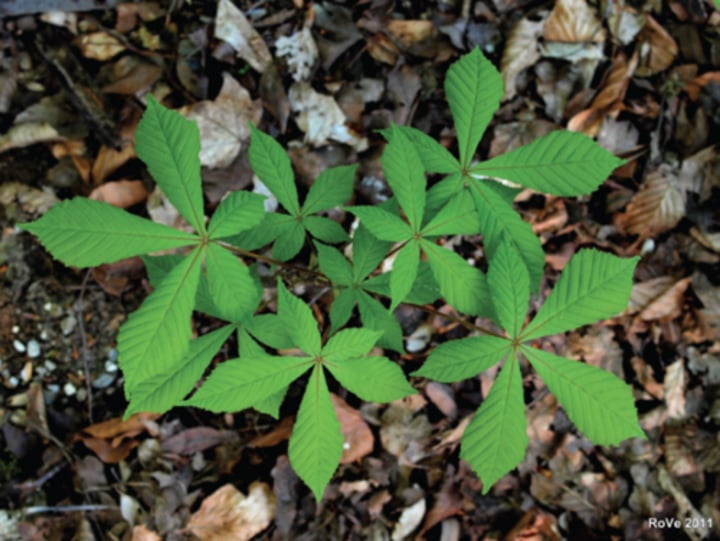BOT3015 Final Exam (Reused Qs)
1/124
There's no tags or description
Looks like no tags are added yet.
Name | Mastery | Learn | Test | Matching | Spaced |
|---|
No study sessions yet.
125 Terms
Which botanical discipline focuses on the interaction between plants and their environments?
Plant Ecology
The dietary fiber that we derive from plant-based foods is primarily made of _____.
Cellulose
Plastids that store oil contents are called as:
Elaioplasts
Dermal vs. Vascular vs. Ground Tissue: Which is the epidermis?
Dermal Tissue
Dermal vs. Vascular vs. Ground Tissue: Which is the xylem?
Vascular Tissue
Dermal vs. Vascular vs. Ground Tissue: Which is collenchyma?
Ground Tissue
The sieve tube element is an example of a (food/water) conducting cell.
Food
The vessel element is an example of a (food/water) conducting cell.
Water
Roughly how many species of plants have been named so far?
320,000
One property that is present in Eukaryotic cells but absent in all Prokaryotic cells is:
Organelles
What is the purpose of lignin in the secondary cell walls of plants?
to provide strength
A tonoplast is associated with which structure?
central vacuole
Most plant cells are within the range of:
10 - 100 micrometers
Which plant cell organelles did we learn as a source of color in red bell peppers?
chromoplasts
The middle lamella of plant cells have _____.
pectin
Which of the following is the outermost boundary of a plant cell?
primary cell wall
Chloroplasts contain a liquid matrix called the ____________.
stroma
The presence of organic acids and anthocyanin pigments are characteristic of:
Central vacuole
A plant leaf is normally green. A possible reason for this color is due to the abundance of _____ in the leaf tissue.
chlorenchyma
True vs. False: There may be more than one tissue type per plant organ.
True
What is the function of vascular tissue in plants?
Transporation of water, minerals, and sugar
Which type of tissue covers and protects the plant organs?
dermal tissue
A simple tissue that gives flexible support to plant organs is:
collenchyma
A group of actively dividing cells of a plant that accomplish growth in length is the __.
apical meristem
The most abundant tissue in living plants is:
parenchyma
What is an actively dividing group of cells?
Meristem
What replaces the epidermis after secondary growth?
Periderm
A dead cell, also known as a stone cell, is also called a ...?
Sclereid
What is a trichome?
An epidermal outgrowth
Parenchyma with plenty of air spaces is known as what?
Aerenchyma
Simple tissue that provides flexible support is also known as...?
Collenchyma
What structure is associated with sieve elements?
Companion cells
The gaps in the secondary cell walls of xylem are known as what?
Pits
A dead cell in the xylem tissue with tapering end walls is known as ...?
A tracheid
Where are Casparian strips located in plant roots?
endodermis
Where are the passage cells found?
In the root endodermis
Dicot roots have a type of stele, called the _________.
protostele
Members of the pumpkin family are known for the storage of ____ in their massive roots.
Water
The food-storage function of the roots is primarily taken up by the ____.
cortex region
When a seed germinates, which part of the embryo emerges first?
hypocotyl
When compared to the stems, the roots of plants do NOT have _______.
nodes, internodes, apical, and axillary buds
Branch roots arise from the ______ region.
Pericycle
Multiple epidermal layers are characteristic of _________.
Orchid aerial roots
A stele pattern called the protostele has:
a core of xylem in the center alternating with phloem
A commercial insecticide, rotenone, is derived from the chemicals derived from the roots of ____ plants.
Barbasco
What is the function of Casparian strips in roots?
Facilitate water movement between cortex and xylem
A pith is likely to be present ______.
in a monocot root
Cells of the growing roots differentiate into permanent cells in the region of ___.
maturation
The tip of the root is protected by the ______, which is made of ______ cells.
root cap; parenchyma
The ________ are specialized roots of mangroves that grow upward and allow for gaseous exchange.
pneumatophores
The _________ of certain orchids turn green and function as photosynthetic organs.
aerial roots
When you examine the internal tissue organization of a herbaceous stem, which tissue would you not find?
Periderm
The wood of a tree is primarily made of what tissue?
Secondary xylem
Which part of the annual ring appears lighter and less dense?
Early wood
CP 8 Questions
...
List some of the adaptations exhibited by the xerophytic plant leaves.
1) multiple layered epidermis
2) sunken stomata
3) reduced or succulent leaves
Describe pinnately compound leaves.
Feather-like appearance; the leaflets are arranged along the midrib (as in rose, hickory, pecan, ash, or walnut tree leaves). Includes a stalk called the rachis.

Describe palmately compound leaves.
Resembles the palm of a hand, with leaflets radiating outwards from one point (as in poison ivy or the buckeye tree). Usually has an odd number of leaves.

What feature is common in the leaves of both dicots and monocots?
presence of leaf veins and chlorenchyma tissue
Mesophyll is ____.
the tissue sandwiched between two layers of epidermis
The term phyllotaxy refers to the:
arrangement of leaves on a stem or branch
What feature would NOT be exhibited by hydrophytic leaf anatomy?
abundant xylem and phloem
A rachis would be a part of all _____.
pinnately compound leaves
The jacket of parenchyma cells that surround the vascular tissue in a leaf is the ____.
bundle sheath
One of the main functions of stomata is to allow for ___.
transpiration
When a leaf is about to go through abscission, a suberized _______ develops closest to the main branch/stem.
protective layer
What plant is used as a fuel source in South America?
Yareta
What plant is used as essential oils used in medicine?
eucalyptus
List an example of a plant that has floral leaves.
Bougainvillea
List an example of a plant that has food storage leaves.
Onion
The vascular cambium is ____.
not a part of any leaves (found in the roots)
The grass leaf blades tend to fold or roll in hot summer seasons. This is due to the presence of _____.
bulliform cells
In a majority of plants, the part that becomes a fruit is the _______.
ovary
Date palms and Willows would be the best examples for __________ condition.
dioecious
The stalk of an individual flower (or floret) in an inflorescence is the ______.
pedicel
The flower structure that makes the pollen is the _____.
anther
If all four whorls of the flower are present, a flower is said to be _______.
perfect and complete
A plant has several colorful flowers on its branches.
Both types of flowers look identical in size, shape, and color.
Upon closer examination, you find that some flowers have only the pistils and some have only the stamens.
This flower is _______.
imperfect
Dioecious plants have __________ flowers on the plant.
either male or female, but not both
The petals of a flower are collectively called as the ____.
corolla
Pick an example of a fruit called an achene.
sunflower
Watermelons and pumpkins belong to a fruit type ___.
pepo
Which fruit is NOT a berry by botanical definition?
strawberry
What distinguishes a capsule from a legume?
Legume comes from a simple ovary; Capsule comes from a compound ovary
Caryopsis refers to the fruit type where the seed coat ______.
is fused with the pericarp to form bran
Pick a fruit that fits this description.
Fleshy fruit derived from one flower, one ovary; exocarp hard or leathery; numerous seeds.
pepo
The pericarp of a majority of fruits is derived from the ______.
ovary wall
Pick an example of an accessory fruit.
apple
The longest wavelength of light useful in photosynthesis are those of:
red light
During the light-independent reactions, what plants produce oxaloacetic acid in mesophyll cells and phosphoglyceric acid (PGA) in the bundle sheath cells?
C4 plants
The most abundant pigments present in higher plants are:
chlorophyll a & b
The energy "currency" of the cell is ______________.
ATP
True vs. False: RuBP is a 5-carbon sugar that is continuously formed during photosynthesis.
True
List three characteristics found in C4 plants?
1) bundle sheath cells with large chloroplasts with numerous starch grains
2) mesophyll cells with smaller chloroplasts with well-developed grana
3) low concentrations of rubisco in mesophyll
CAM photosynthesis occurs mostly in:
cacti and succulents
True vs. False: Resins, gums, essential oils, and rubber are some of the substances that are known as secondary metabolic products.
True
True vs. False: Photosynthetic light-independent reactions can only take place in the absence of light.
True
Explain a summary of photosynthesis with respect to requirements, reactants and products.
CO2 + H2O + light → C6H12O6 + O2 + H2O
True vs. False: The carbohydrate produced through photosynthesis is converted to other substances through the process of assimilation.
True
The oxygen liberated by green plants during photosynthesis comes from __.
water molecules